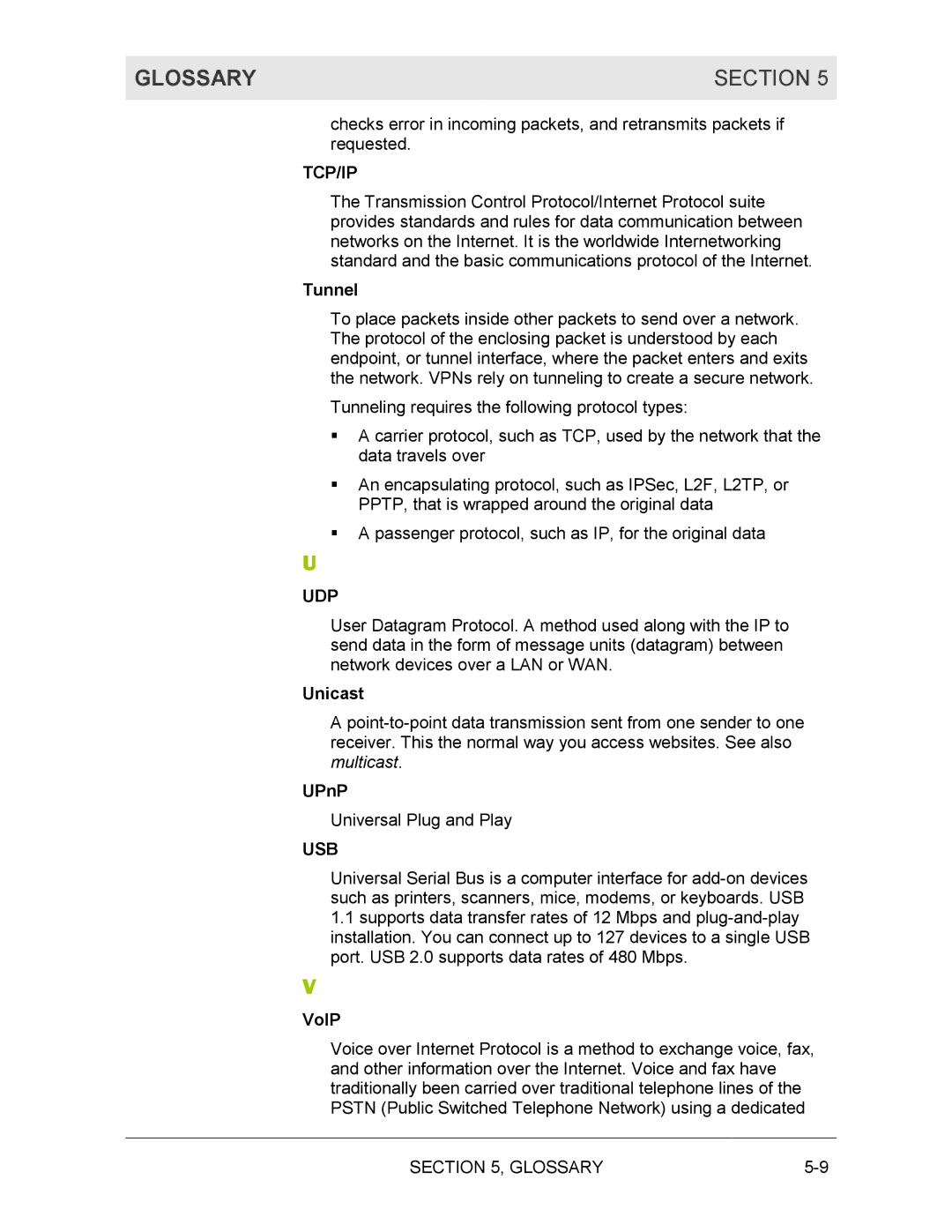GLOSSARY | SECTION 5 |
|
|
checks error in incoming packets, and retransmits packets if requested.
TCP/IP
The Transmission Control Protocol/Internet Protocol suite provides standards and rules for data communication between networks on the Internet. It is the worldwide Internetworking standard and the basic communications protocol of the Internet.
Tunnel
To place packets inside other packets to send over a network. The protocol of the enclosing packet is understood by each endpoint, or tunnel interface, where the packet enters and exits the network. VPNs rely on tunneling to create a secure network.
Tunneling requires the following protocol types:
!A carrier protocol, such as TCP, used by the network that the data travels over
!An encapsulating protocol, such as IPSec, L2F, L2TP, or PPTP, that is wrapped around the original data
!A passenger protocol, such as IP, for the original data
U
UDP
User Datagram Protocol. A method used along with the IP to send data in the form of message units (datagram) between network devices over a LAN or WAN.
Unicast
A
UPnP
Universal Plug and Play
USB
Universal Serial Bus is a computer interface for
1.1supports data transfer rates of 12 Mbps and
V
VoIP
Voice over Internet Protocol is a method to exchange voice, fax, and other information over the Internet. Voice and fax have traditionally been carried over traditional telephone lines of the PSTN (Public Switched Telephone Network) using a dedicated
SECTION 5, GLOSSARY |
